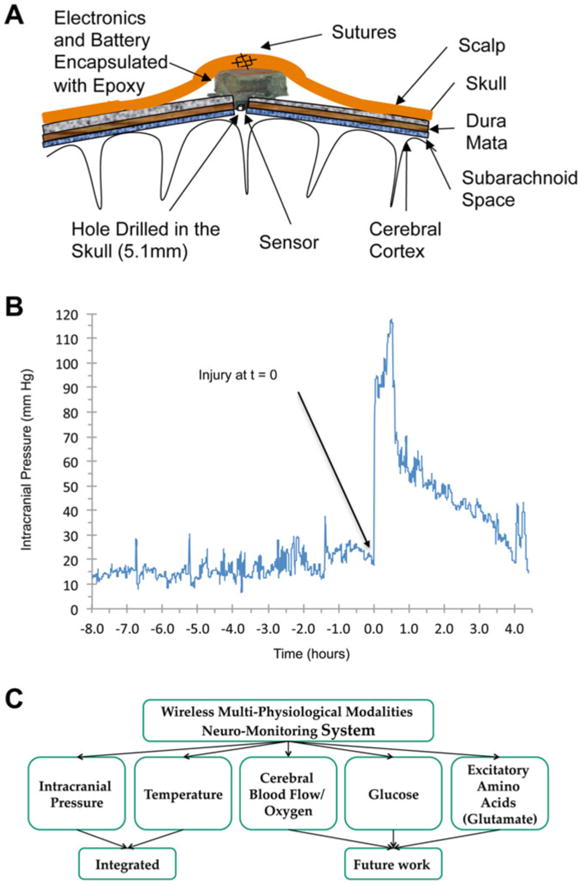Fig. 6.

Telemetry-based neuromonitoring system in swine model of closed-head rotational injury. (a) Schematic of implanted custom-built device contained above the skull with a burr hole for sensor access to CSF. (b) Example ICP trace from wireless device before and after closed-head TBI in swine. In this study, baseline ICP readings were relatively stable over the 8 h prior to injury at 16.7 ± 4.6 mmHg (mean ± standard deviation). We found that closed-head rotation TBI induced a rapid and extreme ICP spike occurring directly upon injury. The acute elevation in ICP generally lasted for 40–60 min, followed by a gradual decline to maintain a persistently elevated level over several hours post-injury. (c) Current and future capabilities of this fully implantable wireless neuromonitoring system
